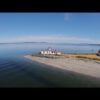Chateau de Courances
Chateau de Courances
Chateau de Courances par drone Rue du Château, Courances, France.Built between 1622 and 1630 by Claude Ier Gallard, the Château de Courances has undergone many changes over the centuries.Left in a state of neglect during the 19th century, it was entirely restored in 1872 by Baron Samuel de Haber, a wealthy Swiss banker seeking a large estate. At the time, Baron Samuel de Haber added important elements, including the famous horseshoe staircase, copied from the Château de Fontainebleau, and the red bricks on all the facades, which are typical of the Louis XIII style, but were inexistent until the end of the 19th century. This is why the Château de Courances is said to be twice Louis XIII!Today, the château is still entirely private, and is home to four generations of the Ganay family, the current owners.Take advantage of a guided visit to learn more about its history and its architecture! Find out more here and here.Following the shambles of the Hundred Years War, the bourgeois Parisian Lapite family bought the estate of Courances in 1460. At that time King François Ier had made the Château de Fontainebleau and its surrounding area very fashionable. Cosme Clausse, Henri II’s secretary of state, already owner of the nearby château at Fleury-en-Bière, acquired the estate in 1552 for his second son. It is thanks to Clausse that we have the Grand Canal (the second in France, the first one being at Fleury, while the third was commissioned by the king for Fontainebleau), the Dôme, the Salle d’Eau and the Pré en l’Île.Starting in 1622, the Gallard family pursued this programme of embellishment, giving the park its classical features. Gallard built a new château in 1630. The widow of Nicolas Pottier de Novion created the Miroir, the large reflecting pool in front of the château, in the middle of the 18th century. Then the estate entered into the patrimony of the Nicolaÿ family through wedlock. Father and son were decapitated during the Revolution. The estate was restituted to the family but Théodore de Nicolaÿ, a legitimist, went into exile in Switzerland in 1830 and the estate slowly fell into disrepair.
courances.net

